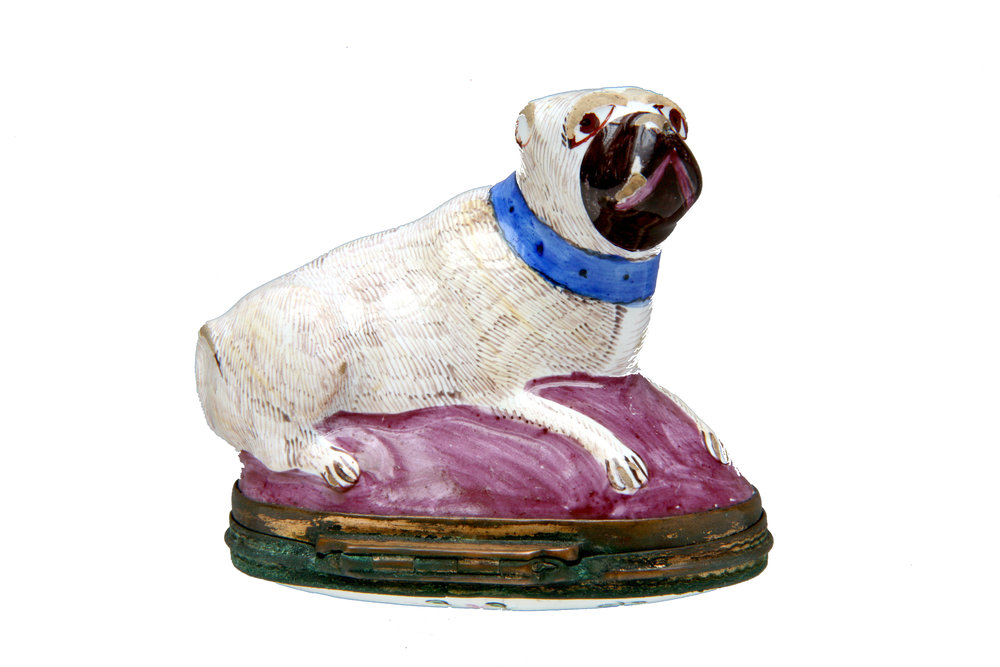
Boxes (bonbonnieres) in the shape of animals and birds, about 1820
Battersea enamel
Bonbonnieres, small cases for sweetmeats take their name from the Italian ‘bombonier’ which were favours or gifts, often sweetmeats, given by hosts to their guests at special occasions such as weddings and christenings. The term bonbonnieres refers to fantasies or fantasy boxes in a sculptural shape such as an animal, bird, fruit or drum and were considered for pocket use.
The sweetmeats they were intended to contain could be candied peel, or sugar coated seeds and nuts; in reality they were more likely to carry aromatic sweets such as aniseed or caraway as breath fresheners to cover up poor dental hygiene.
The group of bonbonnieres on display feature models of birds, dogs, sheep, drums and apples, but the term can be extended to any box that was intended to be carried on the person, and they form part of a group known as ‘bibelots’ which includes snuff and patch boxes and etui- a case for personal grooming, all of which are on display.
‘Enamelling’ is the process of covering a copper base with powdered, coloured glass, laid onto a flux, which was then fired to a very high temperature, quickly for a short period; the glass effectively fuses with the copper, producing a durable surface. The powdered glass was applied via a fine sieve, or ground into a paste in water and applied with a goose quill or brush. The major centres for enamel production in Britain were Battersea, South Staffordshire, Bilston, Birmingham, and Wednesbury. Those on display here are likely to be from Bilston.
Conservator Peter J. David ACR.

